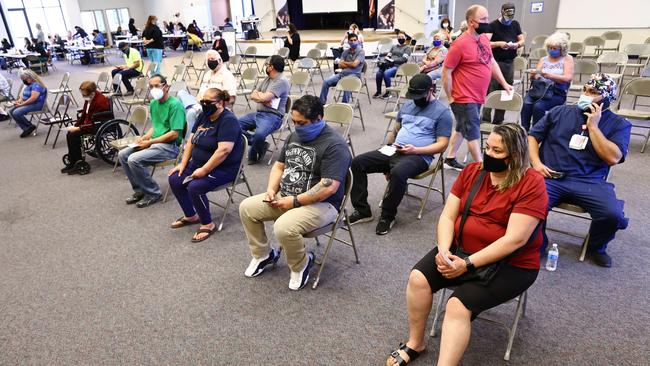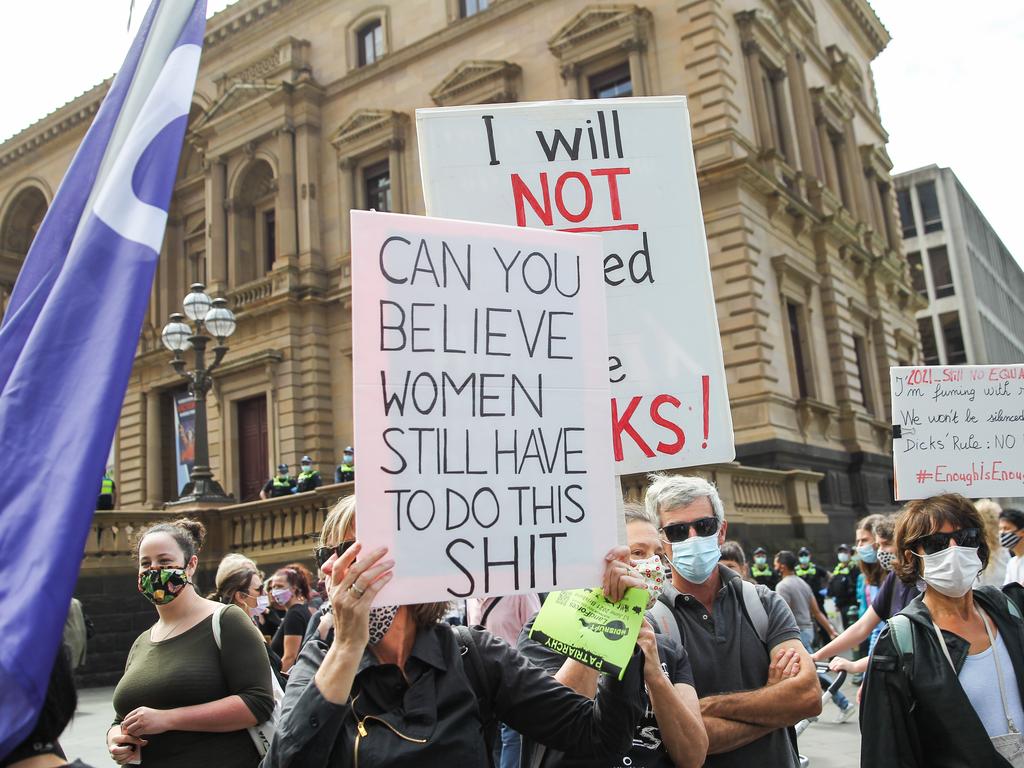If we don’t simplify and speed up the vaccine rollout, it’ll end in tiers
Our staggered vaccine program is too complex and too slow, and California has the answers.

How? Maybe by looking at California.
Six months ago, nobody would have thought to look at any of the states in the union for advice on how to solve the COVID-19 crisis, but now will you look at them go? America is doing three million people a day. Yes, a day.
How do we compare? We haven’t done three million total. Not even close.
The success of the American program is all the more astonishing when you consider how easy it would have been to make a hash of things there, what with their healthcare system (it’s user-pays; it’s inefficient; it’s costly, and it’s very far from egalitarian).
And yet they are getting things done.
It’s worth taking a special look at California because just three months ago it had one of the slowest, most chaotic rollouts in the US. It has now got one of the fastest and most efficient.
They are leaps and bounds ahead of Australia. Four million of us were meant to be vaccinated by the end of last month, but how many of us have actually had a shot? A touch under 700,000, meaning we have missed the target by a staggering 3.3 million, which is a bit like failing to get over the high jump by strolling under the bar.
So what can we learn from California? Three words that start with S: supply, speed, simplicity. All three are key.
First up, simplicity.
You need to keep the rollout process as simple as possible. That will not be easy for a country such as Australia, which just loves red tape and rules. But our rollout plan is too complicated. California’s was too, in the beginning. It started with what’s known as a tiered system. And you can see why. Tiered systems — where you prioritise certain groups over others — look good on paper, and they feel good to the rest of us, but they slow the process right down.
Yes, you want to take care of the most vulnerable first, and supply is limited, and you have to manage it, but you don’t want a multi-tier system so complicated it slows the rollout to a near stop. Because that is what happens: the minute you try to micromanage who gets the vaccine, you sink in a mire.
They had too many eligibility categories in California. For example, do you work in “residential and sheltering facilities and services?” Well, do you? Maybe you’re thinking no, but I do work with elderly people. So do I qualify? People don’t know, or want to check, and so they clog the hotlines with inquiries.
Some just figure they’ll wait and see. That, too, became a problem. One hospital used only a quarter of its supply and the vaccines were starting to expire, but was it allowed to give a healthcare worker’s shot to a teacher?
Answer? No. But they changed those guidelines, so now it’s yes, you can give a near-expired vaccine to somebody else.
But even after some of the stricter rules were relaxed in California, the process remained bogged.
One example: there are more than seven million people aged between 50 and 64 in California. At the time of writing, fewer than a quarter had the vaccine, and all are now eligible.
What to do? Sit around and wait for the other five million to turn up or open the program to the next age group? The answer is to get as many people done as you can. So, from April 15, it will be everyone over 16.
Politically, it’s difficult to get rid of eligibility criteria, because those in “high-risk” groups will shriek and complain. But Australia has virtually no COVID, so the risk of transmission to even vulnerable people is low. And it’s not like anyone is getting vaccinated at the moment. You might as well open the gates.
Simplicity refers to messaging too. Speak to any ad manager, they’ll tell you: confusion is the enemy of a mass-market campaign. California’s message is simple: “Get vaccinated.” It also has one website, and it’s called — so American, this — MyTurn. You go there and you book your turn.
It’s much more complicated here: ask anyone who has a disability, anyone who is working on the frontline, anyone with a relative in an aged-care centre, and they will have a horror story about their time on a hotline, trying to get answers.
Forget about appointments, since nobody has supply.
But first, to speed.
A fast rollout is a good rollout. California’s approach is typically American: let’s overwhelm this thing. You can now get your shot in the carpark at Disneyland without getting out of your car.
But Australia has decided against these mass-vaccination clinics, in favour of an unbelievably ineffective GP rollout. Why?
We’re being told it’s safer because GPs know their patients and can keep an eye on those with underlying health issues, and there is some truth to that.
The problem is that GPs don’t have capacity. We should accelerate rapidly away from this model, and towards the mass-vaccine centre, as quickly as we can. We need a safe but also rapid rollout.
It is also important to go where the people are, meaning into the public housing blocks, for example, where you can easily set up a clinic in the foyer, and off you go.
In California, they went for mass vaccination sites at Disneyland, and Dodgers stadium. They call them “superPODS” – super point of dispensing — and they do thousands of people every day.
The next question you need to answer: who is approved to administer the vaccine?
As with the earlier question — who is eligible to receive the vaccine? — it is important to get rid of as much of the red tape around this question as you can.
Authorise pharmacists, dentists, paramedics, the army physicians and healthcare workers. Recruit volunteers to do the non-medical stuff.
People want to help. Let them help. Because while it’s true that you need medical support, you also need people on the website, answering phones, volunteering at clinics and handing out masks.
The third S — supply — is a harder problem to overcome. Where there had been scarcity in California, there is now abundance. They have supplies because they make vaccines there.
We must rapidly begin making our own.
But even with supply, you haven’t solved the problem. Because vaccines on their own don’t save lives. Vaccinations do.







Yes, we could all sit around bellyaching about how they bungled the vaccine rollout, or we could do something positive — like find ways to speed things up.